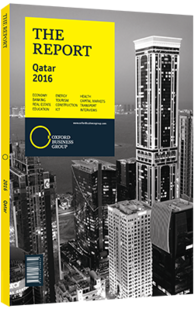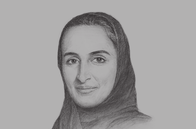Qatar’s sizeable oil and natural gas reserves have underpinned its rapid economic growth over the past two decades. Home to the world’s largest non-associated gas field, the country is the world’s fourth-largest producer of dry natural gas and the largest producer of liquefied natural gas, with hydrocarbons revenues forming the bulk of national income as a result. Although the drop in global energy prices has impacted export revenues, rigorous economic diversification drives in recent years have paid dividends, and in 2015 non-hydrocarbons growth reached 7.7%, compared to a 0.1% contraction for hydrocarbons growth during the same period. The country’s financial sector has continued to evolve; Islamic banking in particular has witnessed significant progress. Meanwhile, as the country gears up to host several important sporting events in the coming years, most notably the 2022 FIFA World Cup, numerous big-ticket infrastructure builds continue to expand the construction sector.
OBG Bloomberg Terminal Research Homepage: OBGR












